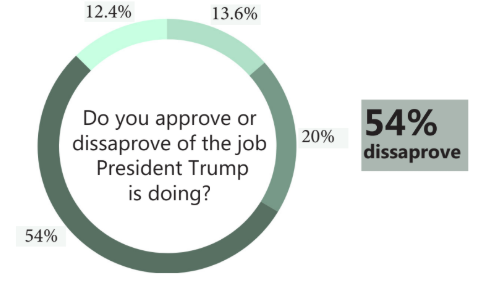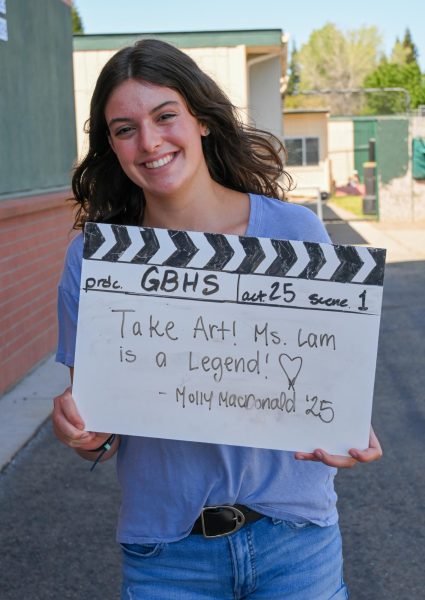Local efforts to help environment
Students and teachers on campus take steps to reduce the damage caused by the climate crisis
GBT.org illustration/MAYA SNOW
GBHS students share their daily efforts to help save the environment.
With natural disasters like the Australian wildfires becoming frequent, the climate crisis has become an even more urgent issue in the minds of many.
New studies every day are showing record high temperatures, and disastrous effects like mass glacier melting are exceeding scientific predictions.
“The consensus in the scientific community is that we need to change immediately,” said science teacher Elizabeth Henderson. “We have been staring this problem down saying we’ll handle it later (…) every year we increase our emissions it gets worse.”
Henderson said that from a scientific perspective, there is a level of emission reductions that needs to be met, and each year it is missed.
Though reversing the effects of global climate change will take a united international effort, some have taken action on a local and individual level in order to help.
“My mom and I do small things like recycling cans and plastic bottles,” said sophomore Denali Lasko, co-leader of the High School Democrats of America club on campus. “I never throw clothes away … if a shirt or something is beyond repair, I cut them up and use them as cleaning rag.”
For many like Lasko, reusing materials and buying second hand products is an easy way for anyone to help prevent pollution.
Fashion is one of the major polluting industries in the world, as it is responsible for 92 million tons of solid waste dumped into landfills each year according to the Copenhagen Fashion Summit.
“I support the Sacramento Tree Foundation,” Henderson said. “Trees are one of the best carbon adsorbents we have (…) and planting trees can be the fastest and easiest way to help.”
But for Henderson, it’s not only what you choose to do in helping the environment, it’s what you choose not to do.
“I question what I consume and think mindfully before I purchase” Henderson said. For her, eating a plant based diet and avoiding single use plastics or other pollutants can be important steps to take, because it pulls support directly from industries that are often the worst polluters.
While helpful toward the cause, individual action can be a difficult long term solution as climate change is a global issue containing approximately 7.7 billion individuals.
“I think political effort is the most effective way to solve the problem,” said senior Rathip Rajakumar. “Politicians set the narrative for the country … and can inspire people to work harder toward a solutions, solving both industrial and personal hurdles to achieving a sustainable future.”
Political action through laws and taxation can often be much faster in solving an issue than a cultural movement to inspire individuals.
The issue of global warming is one with a time limit, and the deadline approaching. There are only 11 years left to prevent irreversible climate damage to our planet according to the Secretary-General of the United Nations.
For many, the goals and regulations set by current United States politicians aren’t enough, fail to meet minimums established by the scientific community.
”I don’t see governments responding nearly fast enough,” Henderson said. ‘And I do not have faith in the ability of the free market to solve the issue in time… so far it hasn’t been an effective strategy.”









![A group photo of all students who came to STN at the first Cinefest of STN were they showed films that other schools did for some of the competitions.
"[my favorite moment was] crazy 8 or cinefest or socializing." Elliana Montez a freshman at GBHS](https://granitebaytoday.org/wp-content/uploads/2025/03/CgHlLzxuCLXTL8GUeOFSXTK2JFtSMxUFrH6bnLcM-600x450.jpg)




